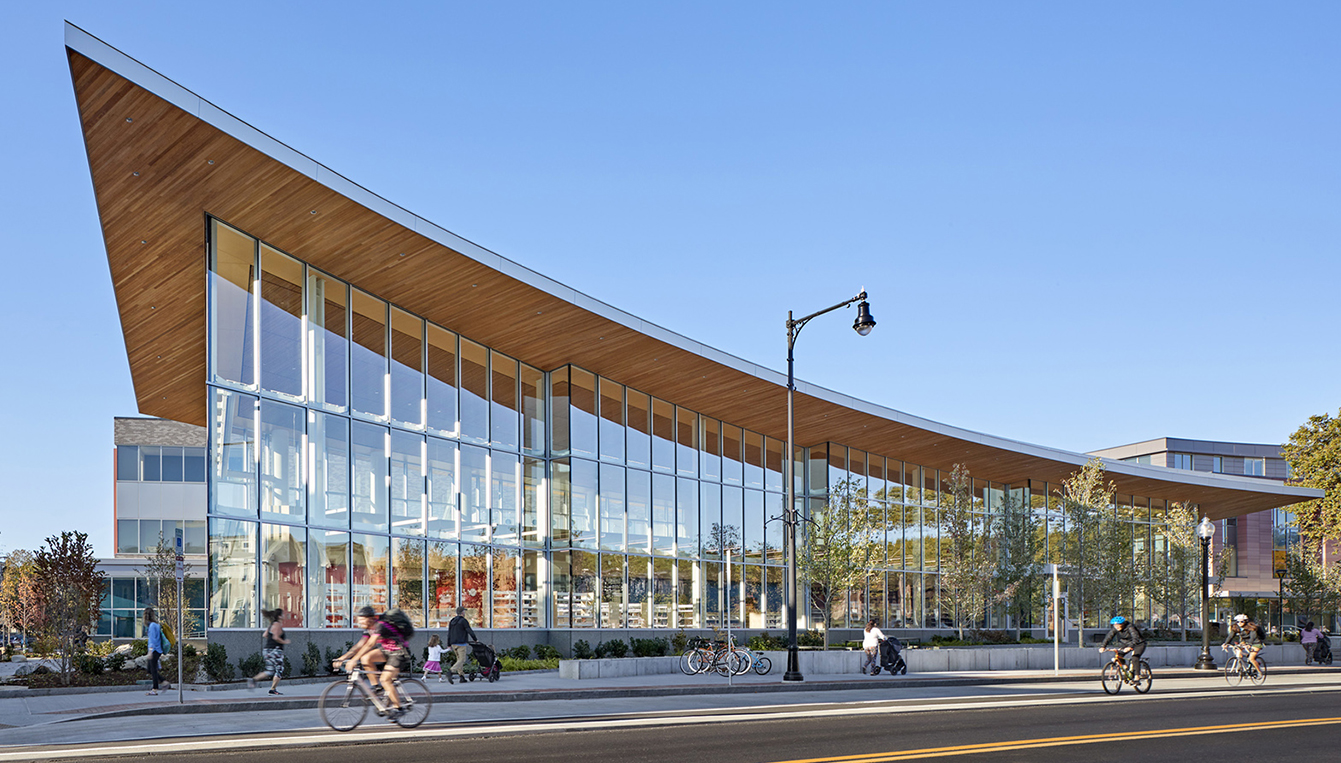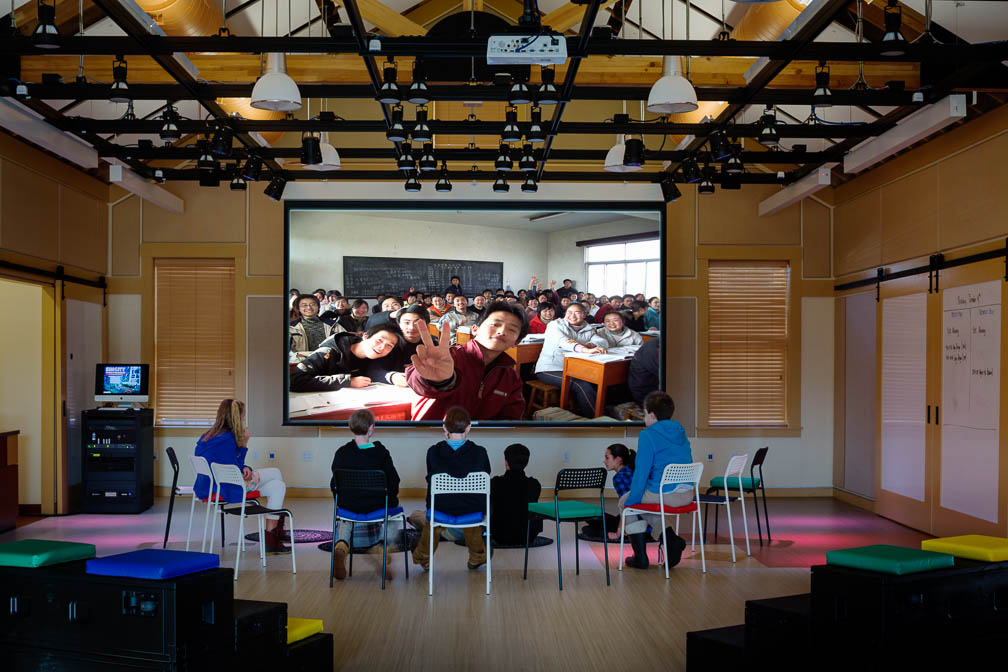Nicole Cuff
K-12 Education | Market Leader
Principal

Parents, teachers, and students have spent the past six months thinking about how to best prepare for a new year of learning in the midst of the ongoing pandemic. How can students stay safe, but still understand what their teachers and fellow students are saying? The two goals are at odds: both using masks and increasing HVAC ventilation air (and noise) decrease speech intelligibility.
Excellent speech intelligibility happens when background noise is low, and the talker and the listener are near to each other, without physical barriers in the way, like walls or masks. How can teachers and students wear masks, and stay at a distance, but still be able to be understood?
We offer below a few classroom acoustics tips that apply to K-12 learning this year, depending on three scenarios: 1) indoor hybrid learning, 2) indoor in-person learning, and 3) outdoor in-person learning.
Indoor Classrooms: Hybrid Learning
Most K-12 classrooms have a small footprint, a flat floor, and movable furniture. In preparing such a room for hybrid learning, we might recommend adding sound-absorbing finishes on the walls to improve speech intelligibility both for in-person communication and online. However, most K-12 classrooms do not have the available wall space for such treatment, since most walls are either glazed or covered with shelves or whiteboards. So largely the choice is about technology and not so much about physical changes to the space.
The teacher will have a fixed barrier immediately in front of their mouth – their mask, which will reduce their speech intelligibility to the students. Therefore, for any speech reinforced K-12 classroom, the most important aspect of speech intelligibility is that the teacher should have their microphone clipped-on and very close to their mouth. That said, due to contamination concerns, it may be necessary to provide each teacher with their own microphone. In addition, we see two main options for communication.
1. The classroom audio is transmitted to the online audience entirely via the teacher’s microphone. Weighing the pros and cons of this scenario, the main advantage is that there will be excellent speech intelligibility from the teacher’s end, but it is unlikely that the students online will be able to hear their peers in the classroom clearly through that microphone. Moreover, if that same microphone perceives an amplifier in the classroom, there is risk of signal feedback through the classroom loudspeakers. In this case, the microphone could be plugged into the teacher’s laptop directly, without requiring additional equipment or software other than the online communication software, such as Zoom, Google Classroom, or other.

2. In addition to the teacher’s microphone, there will be a ceiling microphone that picks up audio throughout the room when the students are speaking. We anticipate that a mixer will be necessary to toggle between the teacher’s microphone and the ceiling microphone. Therefore, this option is more effective than the first, but also significantly more expensive. The system should be able to be preset for most uses, without having an engineer in the classroom live every day. The advantage is that all the students and teachers will be heard well by the remote participants. A disadvantage is that an area/ceiling microphone is more susceptible to picking up undesired background and activity noise, making the speech less clear. Another disadvantage is that the masks covering the students’ mouths may decrease speech intelligibility even further, although there is not much that can be improved to this end.
Regarding HVAC system noise control, the existing background noise level from existing equipment may or may not be a nuisance as it relates to speech intelligibility over the virtual system. While we recognize that upgrades to existing systems may be cost-prohibitive, or present challenges of different natures, one way to reduce this noise is to reduce the operation capacity, which will result in lower noise levels. Another option is to configure the classroom so that the students are as far away as they can safely be from HVAC supply and return openings, if applicable, if for instance, the outlets and inlets are located in the rear or side of the classroom, rather than distributed throughout the space. The same applies to the location of the microphones relative to these terminal HVAC devices.
For any HVAC system upgrades, be sure to select the quietest equipment available for the application. Equipment may need additional sound attenuation measures, such as sound attenuators, duct lining, or vibration isolation devices. An acoustical consultant should be able to help design an optimal strategy, which is acoustically effective without overdesigning. Contact Acentech or see the National Council of Acoustical Consultants’ directory for an acoustical consultant in your area.
Indoor Classrooms: In-Person Learning
Similar modifications for the hybrid option are appropriate for in-person learning. Speech reinforcement is critical – the teacher’s microphone should be clipped-on and very close to where they will speak and there should be a loudspeaker in the classroom, or preferably a distributed loudspeaker system.
Also, the background noise levels will need to be reviewed and mitigated, if they prove to be in conflict with speech intelligibility.
Outdoor Classrooms: In-Person Learning
During the fall, while the weather is still mild, outdoor in-person learning is an attractive option too. Many architects are designing outdoor learning spaces. We assume classes held outdoors will not have speech reinforcement systems, due to rain and moisture concerns, but if classes do have amplification, we recommend similar goals and systems to the hybrid option.
Each classroom will need to be far enough apart from each other so that the students are not distracted by the other classrooms. Plan as far a distance as reasonable between the outermost edges of each classroom to reduce distractions. Choose an outdoor section far from outdoor noise sources: traffic and road noise, outdoor mechanical systems, and flat metal surfaces that radiate rain noise better.
We expect that the classes will need to be held inside a covered structure to protect from rain and wind, likely tents or something similar. The teacher should preferably speak in front of a hard surface that can reinforce their speech – an outdoor wall, or the side of a tent. If the teacher speaks in front of open-air, they will need to work harder to project their speech to the students.
I also recommend reading, my colleagues Ben and Corey’s blogs on how to make university learning work during the pandemic.